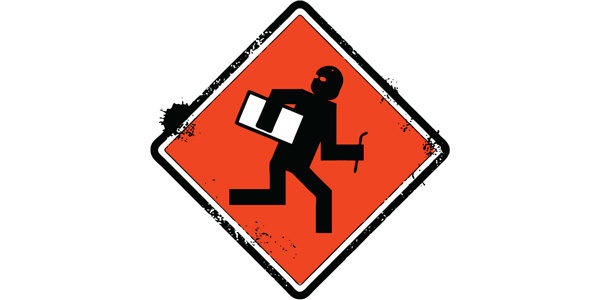NRF study: Retail cargo theft extends beyond stores to supply chains

Cargo theft in the retail supply chain has evolved beyond coordinated pilferage in stores to large-scale heists that occur before the merchandise ever reaches the shelves, according to an annual survey by the trade group the National Retail Federation (NRF). The results of the study, which was conducted among 129 retailers, were released June 8.
According to the survey, nearly half the respondents said they were victims of cargo theft that took place outside their stores. Of those, about 57.4 percent said they had experienced the theft of cargo while en route from the distribution center to the store. Nearly 40 percent said they were victimized at points between the manufacturer and the DC, while 22.1 percent reported cargo theft at the DC.
The results "indicate that organized retail crime should not be an issue solely addressed at the store level," the NRF said in a press release accompanying the report, The 2011 Organized Retail Crime Survey.
"Cargo theft is a rewarding, profitable enterprise, and criminals are increasingly finding ways to infiltrate the supply chain," Joe LaRocca, a senior asset protection adviser at NRF, said in a statement. "As thieves target shipping containers, retailers and law enforcement are fighting back with new initiatives and operations to directly address cargo theft." The statement did not elaborate, and LaRocca was unavailable for further comment.
"A growing problem"
Retail cargo theft was once the province of well-organized shoplifting rings that would plan hits on individual stores and flee with as much as $25,000 in goods. More recently, the threat has spread to activities outside the stores, where merchandise is packaged in pallets rather than units. With such large volumes available for the taking, organized crime rings have muscled in on the action.
Theft outside the stores "is a huge problem, and it is a growing problem," said Barry Brandman, president of Danbee Investigations, a Midland Park, N.J.-based company that provides investigative, loss prevention, and security consulting services to the logistics industry. Brandman said the value of stolen merchandise is measured in the billions of dollars, though he couldn't provide specific numbers.
Brandman said the NRF survey dramatically understates the incidence of theft that occurs at the DC. "You can probably add 10 percentage points" to the frequency figure quoted in the survey, he said.
Brandman said the incidence of "collusive theft" between drivers and DC employees—even at the managerial and supervisory levels—is "insidious" and by far the biggest source of problems in the retail supply chain. Brandman said it is easy for perpetrators at the DC, especially those who are long-term, trusted employees who wouldn't fit the criminal profile, to alter shipping manifests and subtly pilfer high-value merchandise from a truck or facility under the collective noses of guards, closed-circuit television cameras, and alarm systems. These traditional security measures are being rendered irrelevant by increasingly sophisticated theft techniques and new, equally sophisticated theft deterrents, he said.
Brandman said many stolen goods find their way to the Internet, where they are quickly put up for sale and are sold just as fast. In fact, online auction sites have been built that cater specifically to transactions of stolen merchandise, Brandman said. Most of the criminals involved in the thefts are never apprehended, he added.
Related Articles

Copyright ©2024. All Rights ReservedDesign, CMS, Hosting & Web Development :: ePublishing